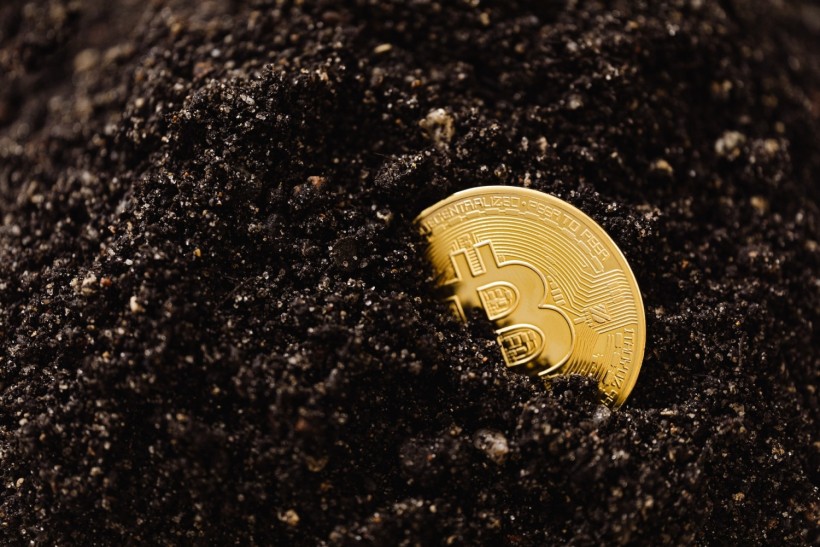Introduction
Hey there, folks! Cryptomining has exploded onto the scene like a comet, creating a new frontier of opportunity and innovation. It's exciting, but have you considered its environmental ramifications? If you haven't, you're not alone. This subject is often brushed under the rug. So, buckle up! We're deep-diving into the good, the bad, and the green of Cryptomining.
What is Cryptomining?
In simple terms, Cryptomining is the digital equivalent of mining gold, but instead of pickaxes and shovels, we're using computers. Massive computer networks validate transactions and secure the network using complex algorithms. But, like any other industrial process, it requires energy-oodles of it.
Where to Buy Cryptocurrencies: Exchanges in the Spotlight
Before diving deeper into the nitty-gritty of crypto mining, it's essential to understand where you can acquire cryptocurrencies in the first place. Knowing the source can help you make more informed decisions about your environmental impact.
Several online platforms are marketplaces where you can buy, sell, or trade cryptocurrencies. These platforms are known as cryptocurrency exchanges. Some of the most popular ones are Coinbase, Kraken, Binance, and CEX.IO.
Now, you might wonder, "What does this have to do with the environment?" Great question! Understanding the role of exchanges can help you grasp the bigger picture of the cryptocurrency ecosystem. Just like how traditional financial institutions impact the environment (think about all those server farms), cryptocurrency exchanges also contribute.
The transparency of exchanges varies; some are more forthcoming than others about their efforts-or lack thereof-to minimize their carbon footprint. So, when you're selecting an exchange, it might be worth checking out their sustainability initiatives.
Many exchanges are beginning to recognize the importance of being environmentally conscious. For example, some are moving their data centers to locations where renewable energy is readily available. It's something to consider whether you're trading on Coinbase or using CEX.IO.
Choosing an eco-conscious exchange can be a small but significant step toward promoting sustainable practices in cryptocurrency.
Types of Crypto Mining
There's more than one way to mine a crypto, each with its pros and cons.
-
CPU Mining: The granddaddy of them all. It's how Bitcoin started, but it's almost obsolete because it's slow and less energy-efficient.
-
GPU Mining: A step up from CPU, GPU mining is faster and more efficient but still consumes significant energy.
-
ASIC Mining: These are the Ferraris of Cryptomining. They are super-efficient but also expensive, consuming a lot of power.
The Energy Consumption of Crypto Mining
To give you an idea, if Bitcoin were a country, its energy usage would be around 29th in the world, between Norway and Bangladesh. Mind-blowing.
Comparison with Other Industries
While it's easy to point fingers at Cryptomining, other industries like aviation, manufacturing, and streaming services consume vast energy. However, these sectors often have more concrete utility and more developed strategies for reducing their carbon footprint.
Carbon Footprint
The high energy consumption translates to a significant carbon footprint. We're talking about millions of tons of CO2 emissions. To put it into perspective, that's like adding thousands of flights worldwide daily!
Indirect Environmental Impact
E-waste is another issue. Mining equipment has a limited lifespan, and its disposal contributes to electronic waste.
Geographical Impact
The environmental harm is also closely linked to the geographical location of the mining operation. In places like China, where coal is still king, Cryptomining is a nightmare for environmentalists.
Impact on Local Communities
In some areas, crypto mining consumes so much electricity that it strains local power grids, affecting the availability and cost of power for everyone.
Renewable Energy and Cryptomining
The silver lining is that some companies are starting to get it right, moving their operations closer to renewable energy sources. For instance, a considerable amount of mining is now done in Iceland, where almost 100% of the electricity comes from renewable sources.
The Limitations of Renewable Energy
However, renewable energy is not a cure-all. Even if all Cryptomining switched to renewables, the energy must come from somewhere, which could strain these renewable resources.
Governmental Interventions
Government actions range from complete bans to implementing "green" mining regulations. Countries like Morocco have outlawed Cryptomining altogether due to its environmental impact.
Global Cooperation
International cooperation could be the key to enforcing greener mining practices, but we're still there.
Public Perception
Public awareness is growing. Green initiatives are trendy, which could influence adopting more sustainable mining practices. However, there's still a long way to go to shift the focus towards environmentally friendly solutions.
Innovations for a Greener Cryptomining
Some cool things are happening on the tech front, like developing more energy-efficient algorithms and mining equipment. These are baby steps, but in the right direction.
Community-Led Initiatives
The crypto community is also stepping up. From creating carbon offset tokens to funding renewable energy projects, there's hope that decentralized solutions could contribute to a more sustainable future.
Case Studies
Countries like Norway are at the forefront of adopting greener Cryptomining practices. They offer tax incentives to companies that use renewable energy, creating a win-win situation for the economy and the environment.
Critics and Counterarguments
Yes, some critics argue that the issue is blown out of proportion. They claim that the focus on Cryptomining is diverting attention from bigger culprits. While they have a point, it doesn't absolve Cryptomining from its responsibilities.
Key Takeaways
-
The environmental impact of crypto mining is significant but varies depending on various factors.
-
There's potential for improvement through renewable energy and technological innovations.
-
Government and public participation can act as catalysts for positive change.
Conclusion
And that's a wrap! The Cryptomining scene is exhilarating but comes with heavy environmental baggage. It's a collective problem that requires a collaborative solution. So let's not just be spectators; let's be participants. After all, we're all in this together, aren't we?
© 2024 NatureWorldNews.com All rights reserved. Do not reproduce without permission.
* This is a contributed article and this content does not necessarily represent the views of natureworldnews.com






